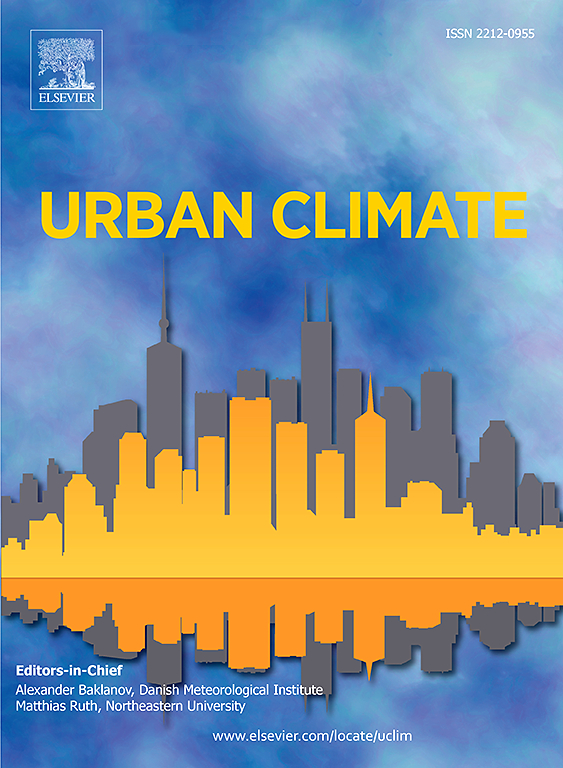Interpretable machine learning prediction of visits for respiratory diseases in Lanzhou, China: impact of air pollution and meteorological variables
IF 6.9
2区 工程技术
Q1 ENVIRONMENTAL SCIENCES
引用次数: 0
Abstract
Meteorological variables and air pollution have raised the risk of associated mortality or morbidity of diseases, particularly respiratory diseases. In this study, prediction models were constructed employing three machine learning algorithms: generalized additive model (GAM), eXtreme Gradient Boosting (XGBoost) and Random Forest (RF) based on daily meteorological and air quality data, as well as visits for respiratory diseases spanning the years from 2013 to 2018 in Lanzhou, Northwest China. By employing cross-validation and hyper-parameter optimization, we found that the three models demonstrated optimal performance when considering factor inputs with a cumulative lag of 3 days. RF emerged as the most effective predictive model, with a coefficient of determination (R2) of 0.558, a root mean squared error (RMSE) of 16.861, and a mean absolute error (MAE) of 12.854. RF improved over GAM by 21.04 % in terms of R2, 8.11 % for RMSE and 13.63 % for MAE. The minimum temperature (Tmin) exhibited the highest bias explanatory rate and adjusted R2 in GAM model, followed by NO2 and the maximum temperature (Tmax). Results analysis on the RF and XGBoost models using the interpretable SHAP method revealed that O3 was the most important factors influencing respiratory visits. The distributions of factor importance and their interactions suggested that respiratory risk elevated with the increased pollutant concentrations (NO2, CO, SO2) when Tmax was below 16 °C or Tmin fell below 0 °C.
中国兰州呼吸系统疾病就诊的可解释机器学习预测:空气污染和气象变量的影响
气象变量和空气污染增加了相关疾病,特别是呼吸系统疾病的死亡率或发病率的风险。本文基于兰州2013 - 2018年的日常气象和空气质量数据,以及呼吸系统疾病的诊疗数据,采用广义加性模型(GAM)、极端梯度增强(XGBoost)和随机森林(RF)三种机器学习算法构建了预测模型。通过交叉验证和超参数优化,我们发现当考虑累积滞后3天的因素输入时,这三个模型表现出最优的性能。RF是最有效的预测模型,其决定系数(R2)为0.558,均方根误差(RMSE)为16.861,平均绝对误差(MAE)为12.854。RF在R2方面比GAM提高21.04%,RMSE提高8.11%,MAE提高13.63%。在GAM模型中,最低温度(Tmin)的偏置解释率最高,调整后的R2最高,其次是NO2和最高温度(Tmax)。结果使用可解释的SHAP方法对RF和XGBoost模型进行分析,发现O3是影响呼吸就诊的最重要因素。因子重要性分布及其相互作用表明,当Tmax低于16℃或Tmin低于0℃时,呼吸风险随污染物浓度(NO2、CO、SO2)的增加而升高。
本文章由计算机程序翻译,如有差异,请以英文原文为准。
求助全文
约1分钟内获得全文
求助全文
来源期刊

Urban Climate
Social Sciences-Urban Studies
CiteScore
9.70
自引率
9.40%
发文量
286
期刊介绍:
Urban Climate serves the scientific and decision making communities with the publication of research on theory, science and applications relevant to understanding urban climatic conditions and change in relation to their geography and to demographic, socioeconomic, institutional, technological and environmental dynamics and global change. Targeted towards both disciplinary and interdisciplinary audiences, this journal publishes original research papers, comprehensive review articles, book reviews, and short communications on topics including, but not limited to, the following:
Urban meteorology and climate[...]
Urban environmental pollution[...]
Adaptation to global change[...]
Urban economic and social issues[...]
Research Approaches[...]
 求助内容:
求助内容: 应助结果提醒方式:
应助结果提醒方式:


